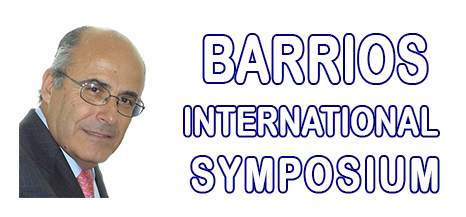ORAL
| SESSION: BatteryTueAM-R4 | 4th Intl. Symp. on Sustainable Secondary Battery Manufacturing and Recycling |
| Tue Oct, 24 2017 | Room: Peninsula 4 |
| Session Chairs: Tetsuya Yamada; Katsuya Teshima; Session Monitor: TBA |
12:30: [BatteryTueAM04] Invited
Limiting Fracture by Fabricating Nano-porous Si Electrodes Katerina
Aifantis1 ;
1Univ of Florida, Gainesville, United States;
Paper Id: 371
[Abstract] Si is the most promising anode for Li-ion batteries, as it allows for a capacity that is 10 times greater than that of commercially used graphite. The limiting factor in commercializing it, however, is the severe fracture it experiences from the first electrochemical cycle, which reduces the capacity over 50% after the first few cycles. A new type of microstructure is presented here that can inhibit fracture in Si anodes by patterning the Si surface with microcones which have a nano-porous surface. Such microstructures did not exhibit the typical dry-bed fracture that Si films exhibit from the first electrochemical cycle, and retained their structural stability for twenty cycles. Furthermore, a very thin solid electrolyte interface layer was observed. To understand this unique behavior a multi physics model is developed that can capture the behavior of continuous and patterned Si films, by considering stress-assisted diffusion.
13:00 LUNCH
| SESSION: AdvancedMaterialsWedAM-R6 | Marquis International Symposium on New and Advanced Materials and Technologies for Energy, Environment and Sustainable Development(3rd Intl Symp. on New and Advanced Materials and Technologies for Energy, Environment and Sustainable Development) |
| Wed Oct, 25 2017 | Room: Condesa IA |
| Session Chairs: Qizhen Li; Kunichi Miyazawa; Session Monitor: TBA |
11:30: [AdvancedMaterialsWedAM02] Keynote
Interfaces in Nanomaterials Katerina
Aifantis1 ;
1Univ of Florida, Gainesville, United States;
Paper Id: 372
[Abstract] The optoelectronic and mechanical properties at the nanoscale can differ drastically than those at the microscale. This is attributed to the large surface to volume ratio that characterizes nanomaterials. In the present talk it will be illustrated that introducing new interface energy terms, in the materials constitutive equations, can allow the interpretation of the experimental stress-strain response observed for nanopillars, micropillars and nanocrystals, which classical mechanics cannot capture. The materials systems to be examined are bi and tri-crystalline Fe-Si alloys, in which nanoindentation is performed near the vicinity of the grain boundary. Furthermore, the behaviour of nanopolycrystalline materials, such as Cu, W, Ni, which exhibit the inverse Hall-Petch transition can also be captured through consideration of such new interface energy terms. The nano indentation results are compared with atomistic simulations and dislocation dynamics to obtain a physical interpretation for the interface energy terms.







